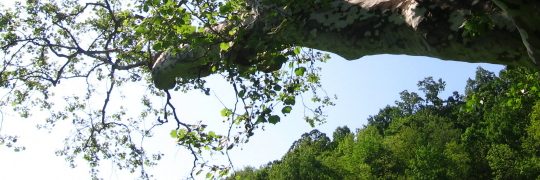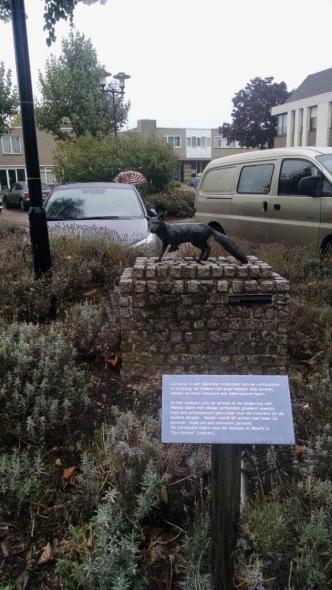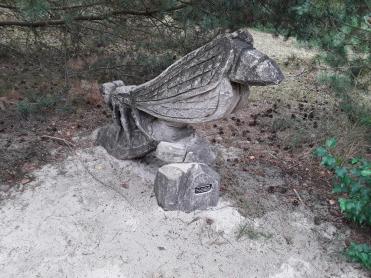Moers and Kaldenkirchen – Day 7 afternoon
My great-grandfather Otto Ferdinand deGruyter was christened in Sankt Josef Kirche, Moers, Germany, on 21 July 1845. Long ago when I started researching him, I found many de Gruyter mentions in the church book, but not his christening. It was only after I had given up and scrolled back in the microfilm far before the birth year – 1852- on his death certificate and gravestone that I found it. He was 40 when he married my great-grandmother, Jane Hill, who was 25, and I can only think that he told her he was much younger. The 1880 census, 5 years before they married, gives his correct age.
Otto’s father Ferdinand’s only surviving brother, Martin, moved to Duisburg by 1833, just east of Moers, and had a coal and shipping company. (His grandson Walter deGruyter founded the scholarly publishing house.) Their mother, Maria van der Hoeven, died when Ferdinand was 9, Martin was 11, and their only sister, Maria Josephina, was 8. Their father, who was a needle maker (as his father and grandfather had been pinmakers), and grain trader died in September 1829. Ferdinand married Louisa Venhorst, in Meerlo, that December and they had three children by 1834. Sometime after the youngest, Josephine, died in March 1835, Ferdinand and Louisa moved to Moers, where their four younger children were born, starting in 1842. I do wonder about the 8-year gap in children. Louisa’s parents, Peter Venhorst and Antonetta Nienhaus, died in 1833 and 1835. Louisa’s brother Otto apparently moved with Ferdinand and Louisa – he would have been just 11 when his parents died; he died in Moers, at the age of 17, in 1841. Her brother Eduard was working as a goldsmith in Kleves when he died at 24, in 1842, but was buried from St. Josef’s in Moers. Of Peter and Antonetta’s 15 children, only four survived to marry.
Ferdinand was a watchmaker, and his son Otto, grandson Olen, and his namesake and great-grandson, my father Ferd, were also.  Here is Ferdinand’s signature from Otto’s birth certificate.
Here is Ferdinand’s signature from Otto’s birth certificate.
The church was not open, and it was built after the deGruyters left. The old church, built in 1778-79, now called Marienheim, is across the street and houses the parish kindergarten.

Moers was Reformed, and there was no Catholic parish from the Reformation until after the Seven Years War in 1771, when there were enough former French soldiers, artisans, and day laborers who had moved in to warrant it. The city, which had been under Dutch rule until the beginning of the 18th, then Prussian, was under French rule from 1794 to 1815, when it went back to Prussia.
I didn’t know where they had lived, but suspected it was in the commercial area between the old and new markets, near the castle and their church, which is full of houses with shops in the ground floor. Here are some views of the area of the old market, where they likely lived and worked. It probably looked much like this in the mid-19th century.
After we got back, I found that the municipal birth certificate for Otto’s brother Ferdinand had a street address, 90 Steinstrasse.
It is just inside the old wall, and we walked past it at least twice, since it was near our parking in one of the bastions from the old star-shaped fortifications – which we have now seen from Zwolle in the north all the way to Timisoara, in western Romania, where we went last year on the hunt for Robert’s family from there.
We had coffee on the patio at a cafe on the old market square, and headed back towards Venlo.
We missed a turn and ended up wandering on back roads rather more than we had intended, but the countryside was lovely. Instead of endless utility poles, Dutch and German roads are bordered by planted trees, and all but the smallest have parallel bike paths. And there is no junk, abandoned buildings, litter, or indeed anything unlovely. We had intended to go through Krefeld, where the Quaker and Mennonite founders of Germantown, Pennsylvania, came from in the 1680s. A few also came from Kaldenkirchen, but I was interested because Arnold Custer and Gertrude Doors, who immigrated to Germantown a bit later, were from there. One of their sons, Conrad, was an original settler of what is now Rockingham County, Virginia. His granddaughter Susannah married John Runyon, and they were first settlers of Harrison County, and grandparents of Margaret Morrison, who married Mark Hersman and is my great-great-grandmother. So after 200 years a descendant of theirs married a deGruyter from Venlo and Moers. (Arnold Custer and Gertrude Doors were also the ancestors of George Armstrong Custer. So.)
On the way back from Kaldenkirchen, we passed through the area where the van Leeuwens and Schonckens lived in the 18th century. In 1733, just after their second child was born, Peter Leeuw and his wife Helena Canjels bought 5 and a half morgens of cropland on the Wylderbeek, next to the Weijeclooster (Mariaweide Klooster) land, which is now along the A73, southwest of Venlo. It was between there and the Sinselbergh, which is the slight sandhill, now parkland, between Kaldenkirchen and Venlo. In 1796 their first child, Anna Maria, had died, and her widower Christian Schoncken borrowed money against it. This was probably the area now the train station and railyards. In 1785, Jan Venhorst and his wife, Helena Schoncken (daughter of Maria van Leeuwen and Christian Schonken) rented another piece of land they owned nearby, 4 morgens at the bottom of the Bergh near the Onderste Houtmolen, which still stands, and along the road.
We had dinner at the Eetcafé de Brasserie. I had zuurvlees – “sourflesh” – the Dutch equivalent of sauerbraten, and a Limburg speciality – in both Belgian and Dutch Limburg.









 It seems likely to me that, like most churches of the time, the rich were buried in the church, the gravestones forming the floor, and they were all removed or covered, as the Bishop’s was, in the 1830s. Arnold Schoncken’s 1735 death record in the church book says he was buried in the “moederkerk”, when most other death records from the church say “kerkhof”, which is churchyard. I lit a candle for them all.
It seems likely to me that, like most churches of the time, the rich were buried in the church, the gravestones forming the floor, and they were all removed or covered, as the Bishop’s was, in the 1830s. Arnold Schoncken’s 1735 death record in the church book says he was buried in the “moederkerk”, when most other death records from the church say “kerkhof”, which is churchyard. I lit a candle for them all.


















